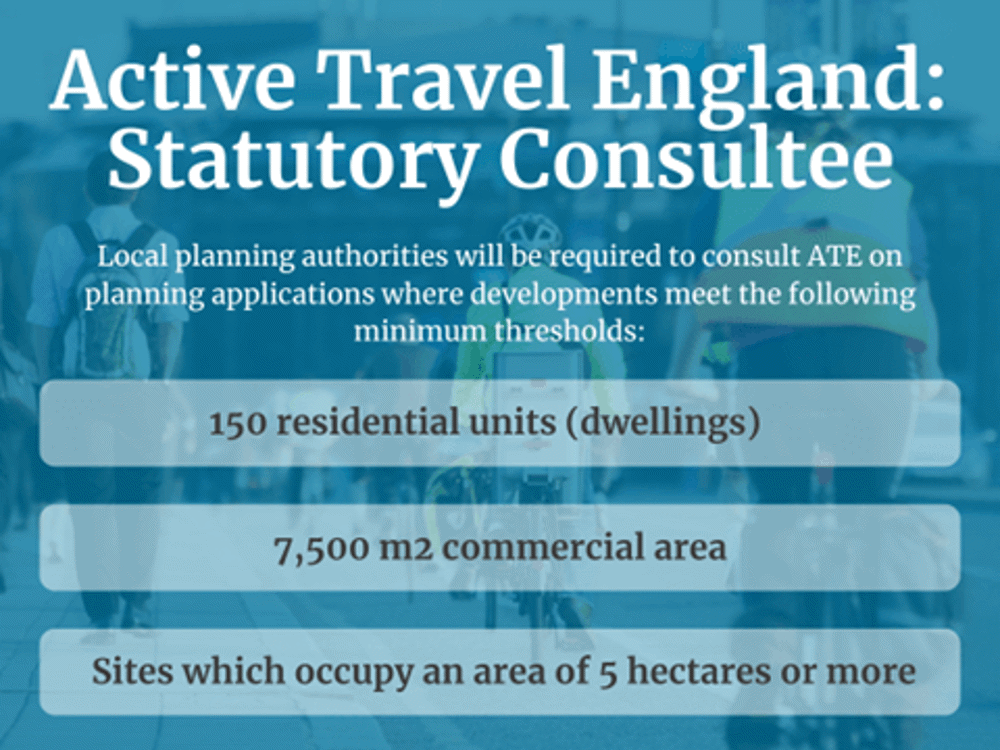Active Travel England (ATE) is the executive agency that has been set up to promote and encourage walking and cycling as part of the UK government’s overarching target for 50% of trips in towns and cities to be in the form of walk and cycle trips by 2030.
From 1 June 2023, ATE will also become a statutory consultee on planning applications for major new developments and on land used for highways, outside of London. Inside the capital, current arrangements between the Boroughs, the GLA, and Transport for London will apply unless otherwise agreed on a case-by-case basis.
ATE’s role is to assess all applications for active travel capital and revenue funding, including from wider funds such as the City Region Sustainable Transport Fund, the Levelling Up Fund and RIS2. ATE will award funding to schemes only if they meet the standards and principles set out in Local Transport Note 1/20: Cycle Infrastructure Design.
The intention is that this will help to ensure that when new developments are being considered, the opportunity to build in active travel routes is fully maximised. Local planning authorities will be required to consult ATE on planning applications where developments meet the following minimum thresholds:
• 150 residential units (dwellings);
• 7,500 m2 commercial area; or
• Sites which occupy an area of 5 hectares or more.
What does this mean for Developers?
All larger developments would need to demonstrate that they have embedded active travel into their developments, in accordance with LTN 1/20. The indicated thresholds may exclude all but the larger schemes from ATE consideration; however, this doesn’t mean that smaller schemes are exempt from designing accordingly.
LTN1/20 sets a recommended basis for new design standards for roads based on overarching design principles to achieve more people travelling on cycle or by foot. One of the key elements of the LTN1/20 guidance is that “Cycle infrastructure must join together, or join other facilities together by taking a holistic, connected network approach which recognises the importance of nodes, links and areas that are good for cycling.”
ATE will also begin to inspect and publish reports on highway authorities for their performance on active travel and identify particularly dangerous failings in their highways for cyclists and pedestrians. Effectively performing a role in raising standards and challenging failure.
Mayer Brown strongly recommends that developers should carefully consider how active travel infrastructure can be incorporated within the layout design of a development from the outset. Local authorities are placing greater emphasis on high quality active travel infrastructure design including cycle-safe junctions and low-traffic streets. Failing to do so may result in significant layout revisions and potentially lengthy delays to planning applications. Find out how we can help with Transport Planning for your project.
For further information, please contact Chris Slack at cslack@mayerbrown.co.uk.
For any other enquiries please, fill out our form and we’ll assist you. Take a look at our other blogs for similar content and keep up to date with Mayer Brown LTD with our news page.








